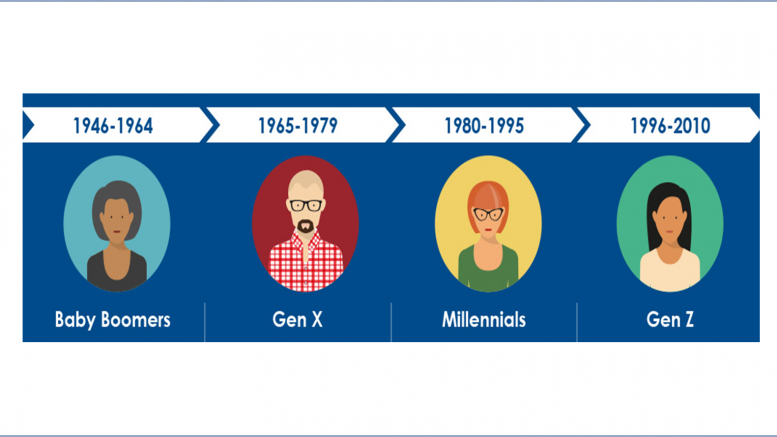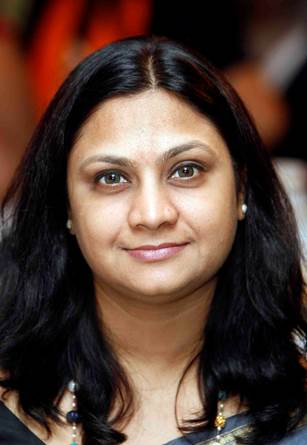The 1960s was a decade of revolutionary change that reshaped the world’s attitudes about war, religion, sex and civil rights. It was fueled and ignited mostly by the young and represented a deep ideological chasm that had formed between the depression-era parents and the Baby Boomer kids. Social scientists called it the ‘generation gap”. As the rate of social change happens, generations emerge with greater frequency, which is understandable. But why is the word “generation” invariably followed by the word ‘gap’. Does it matter at all, can we afford to have one-size fits all kind of communication; and if not, what challenges does it throw at communicators?
This ‘gap’ forms when two age groups start to see the world from notably different lenses, reflecting fundamentally diverse visions of the society and self. It is commonly perceived as the differences between generations that initiates conflict and complicates communication, creating a “gap”. Hence the need to be aware of these differences in order to be able to deliver a message that resonates across generations in an organisation. While we have heard a lot about gender diversity, it is important for organisations to have generational diversity, to allow an exchange of ideas and varied perspectives to the business. Each generation brings a strength which may complement the other. The older generations may be able to mentor the youngers and create a culture of success in the organisation.
This is a quick guide to the generations that communicators may usually be talking to simultaneously:
- Baby Boomers (Born between 1946 and 1964)
- Gen X (Born between 1965 and 1976)
- Millennials (Born between 1977 and 1995)
- Gen Z (Born after 1995)
What are the fundamental differences? Does one generation prefer to communicate in person, versus another that may prefer email, or another that prefers snapchat or WhatsApp? Do they prefer to dress casual, semi-formal or formal? Do they like fixed working hours or flexi? Do they prefer longevity in an organisation or quick job changes for better learning or opportunity? Is their supervisor a ‘boss’ or a friend? Do they prefer to be addressed formally or on first name basis? Are they open to change or run a mile when they hear that word? What about learning agility? Should the communication happen on an employee portal or a mobile app? The questions are endless, but the answers limited.
It is impossible to tailor make communication for each generation in an organisation, not all generational attitudes are set in stone. We are, after all, dealing with individuals who may be very diverse from each other even if they belong to the same generation. The key, then, is not to look at the differences, but the similarities. Each organisation is guided by its mission, vision, values and culture, and the role of communication is to bring people together in a way that these elements are strengthened. Experts who have studied generational differences make it easier when they say that, surprisingly enough, all generations have the same values such as family, honesty, trustworthiness and integrity. The difference lies in the way they express these values and the desire for structure, respect and feedback.
The organisation can create guidelines and orient its employees right from the beginning on what level of communication, and in what form it is expected by the organisation. Creating a framework within which flexibility is allowed can provide an opportunity to people across generations to express themselves freely and creatively, without fear of sounding out of tune in a chorus.
Creating periodic audits within an organisation to figure out overarching trends and preferences in modes of communication can make it easier for the organisation to communicate by adopting the new methods. This also reflects well on an organisation’s ability to change and adapt with the changing times. In addition, it signals to its employees that they are valued and it is important for the organisation that their needs are considered.
To bring an inter-generational perspective into your communications design and execution, it is always a good idea to intentionally create a mix of generations while planning and executing campaigns or projects. Through an agreement to disagree can emerge new learnings and a new way of doing things that can create communication that resonates across the organisation. Building rapport with each generation with a broad understanding of their motivations and strengths, can help smooth the potholes on the path of healthy communication.
Each generation wants to work in an environment of openness and transparency. Everyone wants to be involved and feel that they have an important part to play in the growth of the organisation. Creating generational stereotypes may not work to foster this culture and may breed comparison of one is better than the other, creating unnecessary resentments. Sensitivity towards any such action should be high in the HR and communications teams. Different generations must be exposed to the differing points of view, and be encouraged to appreciate the differences. What is good in one may also be good for the other.
Closer home, the COVID-19 pandemic has forced the Baby Boomers to see the advantages of technology, yet they have a lot more to learn about how to use it efficiently. For instance, it may be very difficult for them to navigate through the maze of truth, genuine or fake news. This is an opportunity for them to learn from the Millennials or Generation Z on how to discern one from the other. Similarly, Generation X has been criticising the Millennials for being ‘undisciplined’ and having excess value for work-life balance, but the pandemic has forced us to work from home and have work-life balance, perhaps even more than all generations together would have liked to have. The Millennials and Gen Z on the other hand, due to their heavy reliance on electronic means of communication, can often have trouble with personal communication, and this could be a time to bring them closer into the family fold of communication.
A lot of it depends on being aware of these subtle differences and observing people in action. Like they say actions speak louder than words. If one is not sure about how someone prefers to communicate, just ask! And, if nothing else works, a genuine, well-timed smile and a thank you can make everyone open to communication, irrespective of the ‘gap’.
The views and opinions published here belong to the author and do not necessarily reflect the views and opinions of the publisher.



Be the first to comment on "Mind the Gap – Organisational Communication in the face of Generational Diversity"